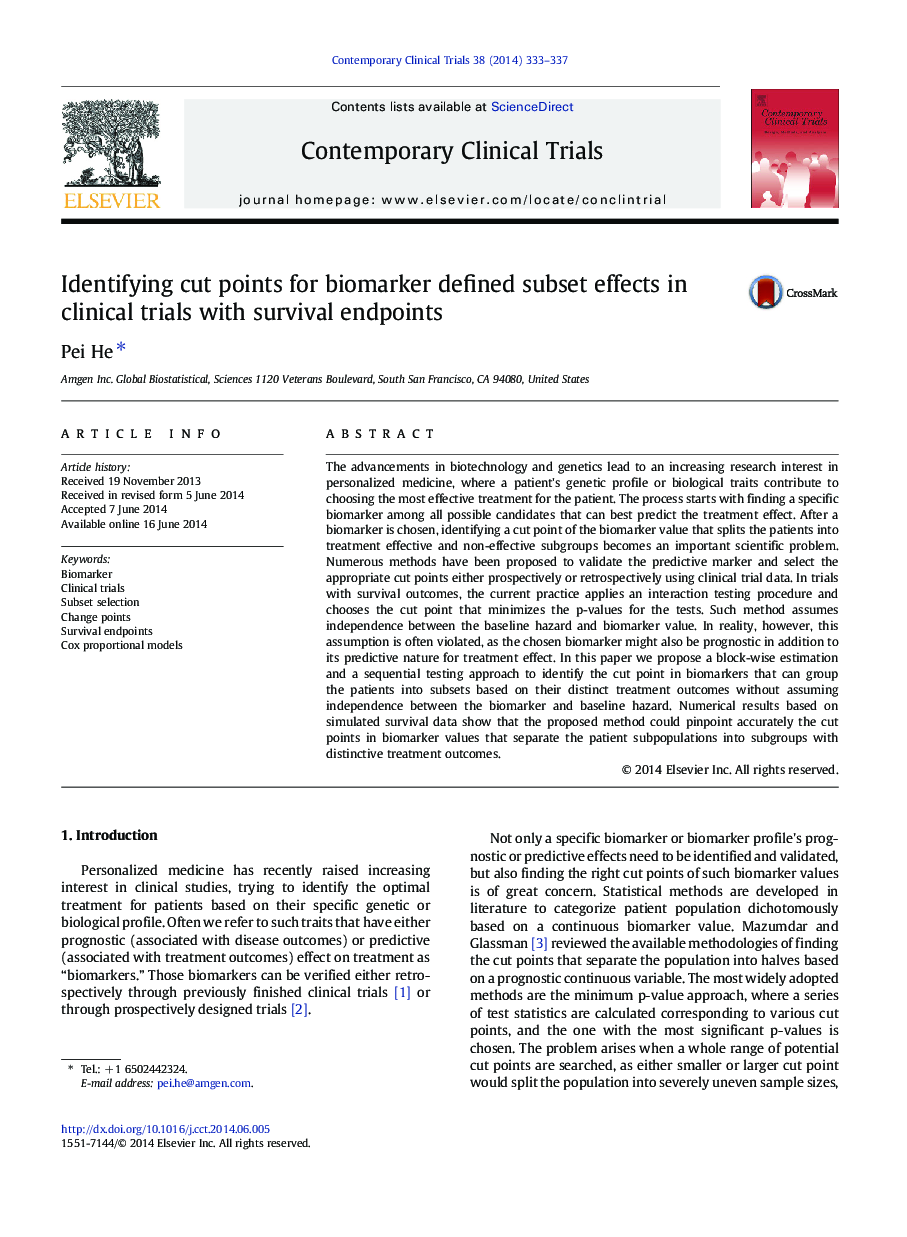| Article ID | Journal | Published Year | Pages | File Type |
|---|---|---|---|---|
| 6151149 | Contemporary Clinical Trials | 2014 | 5 Pages |
Abstract
The advancements in biotechnology and genetics lead to an increasing research interest in personalized medicine, where a patient's genetic profile or biological traits contribute to choosing the most effective treatment for the patient. The process starts with finding a specific biomarker among all possible candidates that can best predict the treatment effect. After a biomarker is chosen, identifying a cut point of the biomarker value that splits the patients into treatment effective and non-effective subgroups becomes an important scientific problem. Numerous methods have been proposed to validate the predictive marker and select the appropriate cut points either prospectively or retrospectively using clinical trial data. In trials with survival outcomes, the current practice applies an interaction testing procedure and chooses the cut point that minimizes the p-values for the tests. Such method assumes independence between the baseline hazard and biomarker value. In reality, however, this assumption is often violated, as the chosen biomarker might also be prognostic in addition to its predictive nature for treatment effect. In this paper we propose a block-wise estimation and a sequential testing approach to identify the cut point in biomarkers that can group the patients into subsets based on their distinct treatment outcomes without assuming independence between the biomarker and baseline hazard. Numerical results based on simulated survival data show that the proposed method could pinpoint accurately the cut points in biomarker values that separate the patient subpopulations into subgroups with distinctive treatment outcomes.
Related Topics
Health Sciences
Medicine and Dentistry
Medicine and Dentistry (General)
Authors
Pei He,
